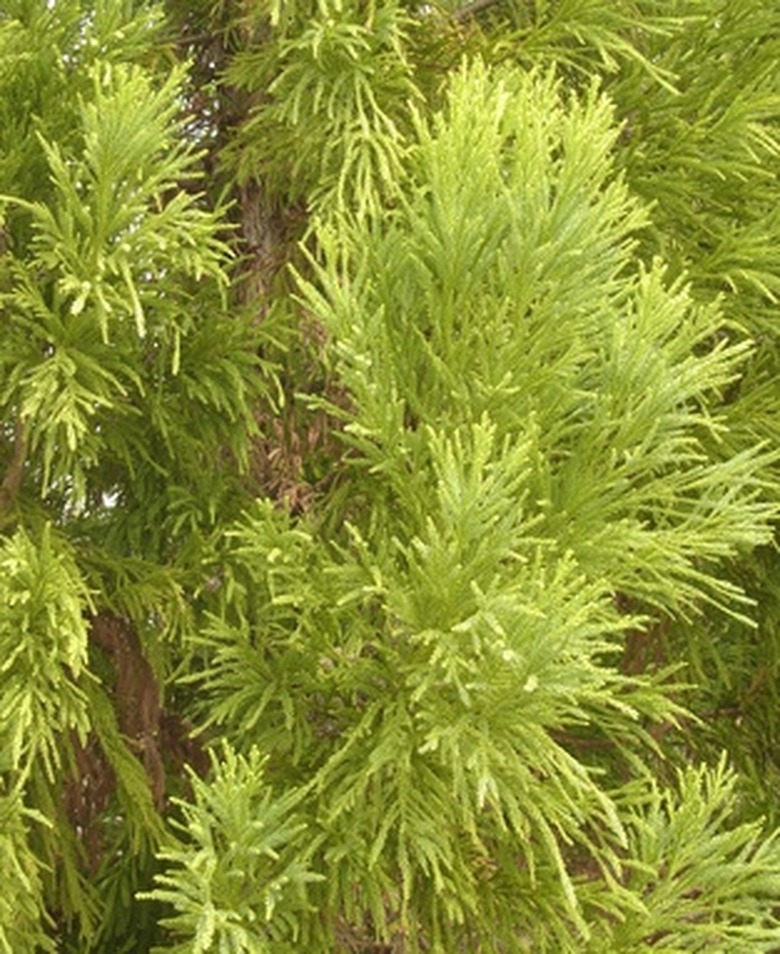Native Cedar Trees Of Texas
Texas is a state with a wide range of climates, from the humid subtropical climate of the east to the arid desert climate of the west. The USDA divides Texas into 4 growing regions ranging from zone 6 through zone 9. Because of this, a wide range of cedar trees are native to Texas. Cedar trees are members of the pine family with needle-like leaves and seeds that grow in cones.
Eastern Red Cedar
Eastern red cedar is a tree that is native throughout the United States, from Canada through Texas. The tree grows well in full sun and all soil types from clay to sand. Red cedars do not grow well in shady locations. The trees may be male or female. Male trees produce pollen that often triggers allergic reactions. Female trees produce dark blue berries from fall to winter. Red cedar wood produces a good fragrance that is known for repelling moths. The wood has an attractive red and yellow tone. Because of this, red cedar is a popular wood for chests, closets and dressers.
- Texas is a state with a wide range of climates, from the humid subtropical climate of the east to the arid desert climate of the west.
- The tree grows well in full sun and all soil types from clay to sand.
Mountain Cedar
The tree produces yellow pollen and blue berries, just like eastern red cedar. Mountain cedar grows well in the west Texas soil, which is rocky and alkaline limestone. The bark peels away from mountain cedar in spring. Because of this, golden-cheeked warblers prefer to nest in older stands of trees so that they can use the peeled bark as nesting material. The tree is frequently used for fence posts. For this reason, the tree is sometimes known as post cedar.
Thickbark Cedar
Thickbark cedar is sometimes called alligator juniper because the bark resembles the skin of an alligator. The tree grows well in rocky soil at moderate elevations in west Texas. The tree's needle-like leaves are bluish green in color and the tree produces fruit that takes two years to mature. In the first year, the fruit resembles small, blue berries. These berries turn brown as they ripen in the second year. The plant's small stature meant that it can be grown as a shrub as well as a small tree.
- The tree produces yellow pollen and blue berries, just like eastern red cedar.
- The tree's needle-like leaves are bluish green in color and the tree produces fruit that takes two years to mature.
Mountain Red Cedar
Mountain red cedar resembles eastern red cedar in that it sheds its bark similarly. Mountain red cedar has bluish-green foliage. The fruit is larger than the fruit of eastern red cedar and takes two years to mature. The tree grows high in the west Texas mountains and along the panhandle. The tree requires soil with good drainage, but is extremely drought tolerant.
